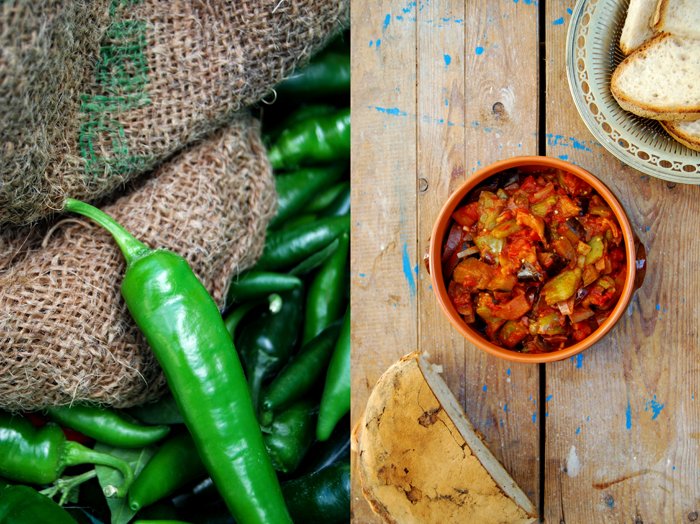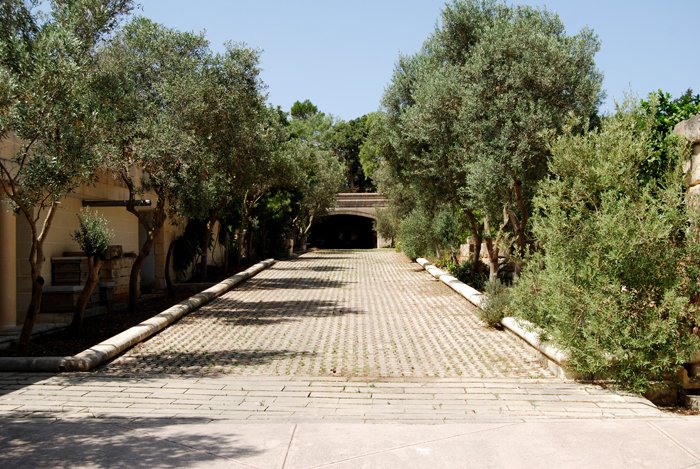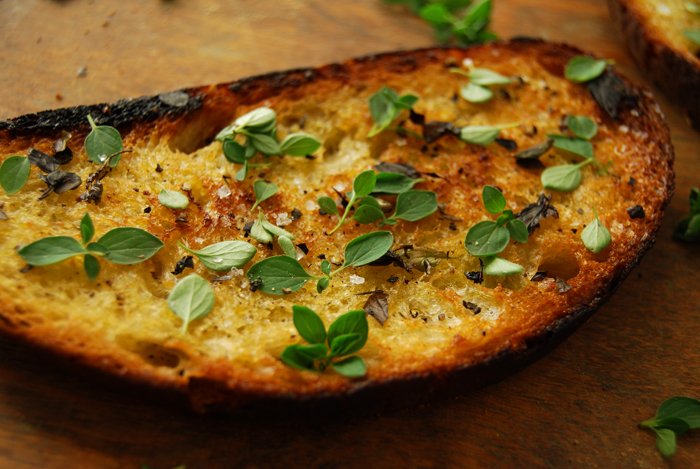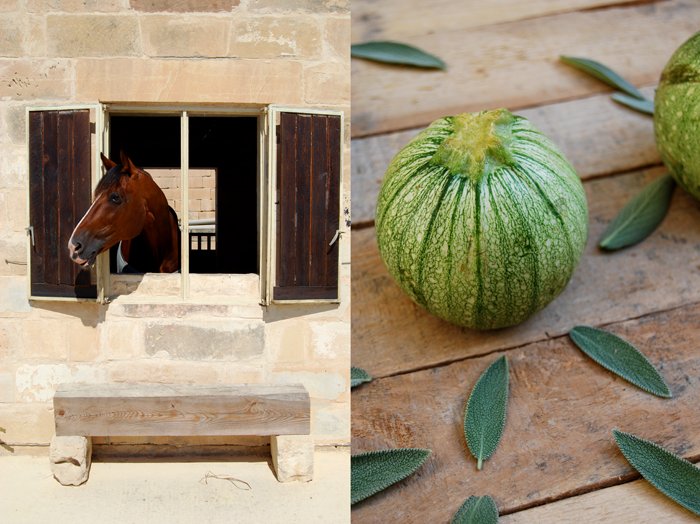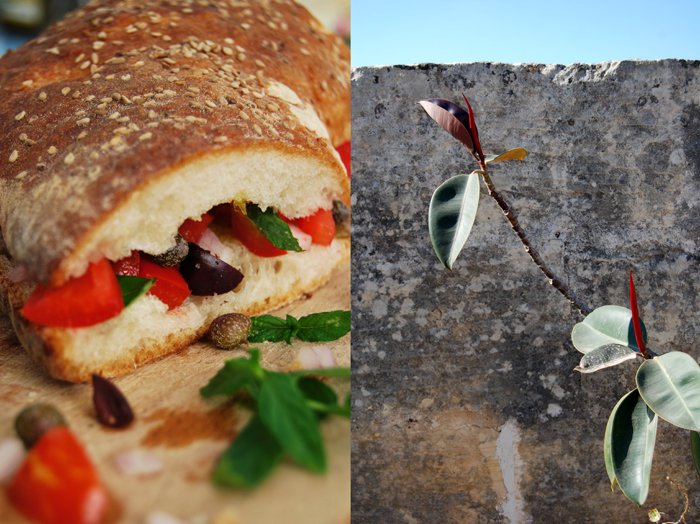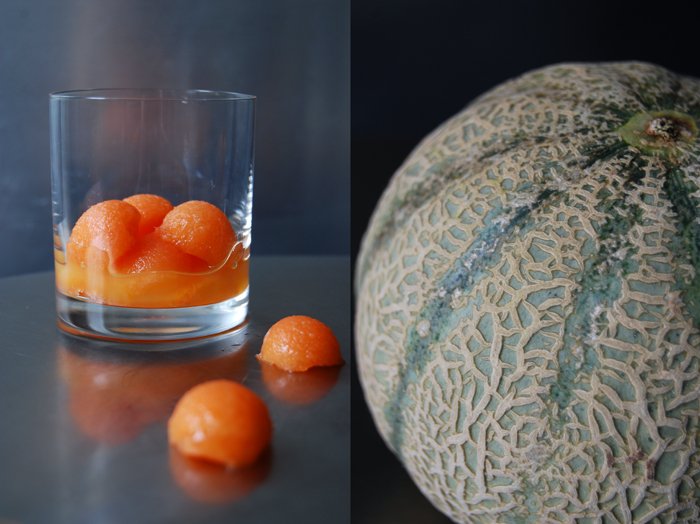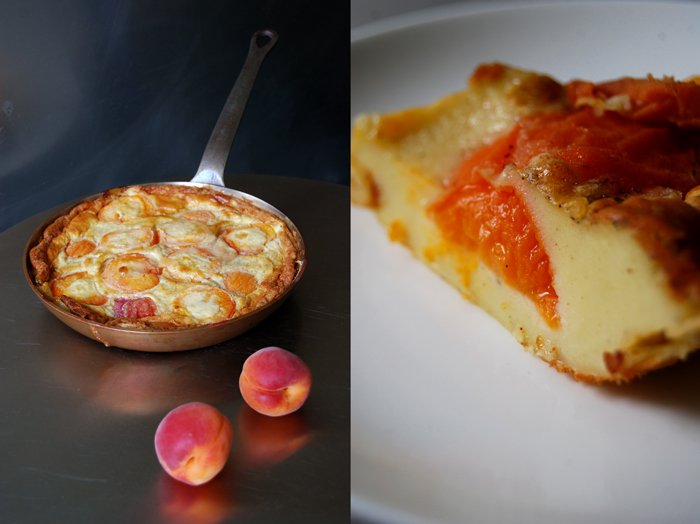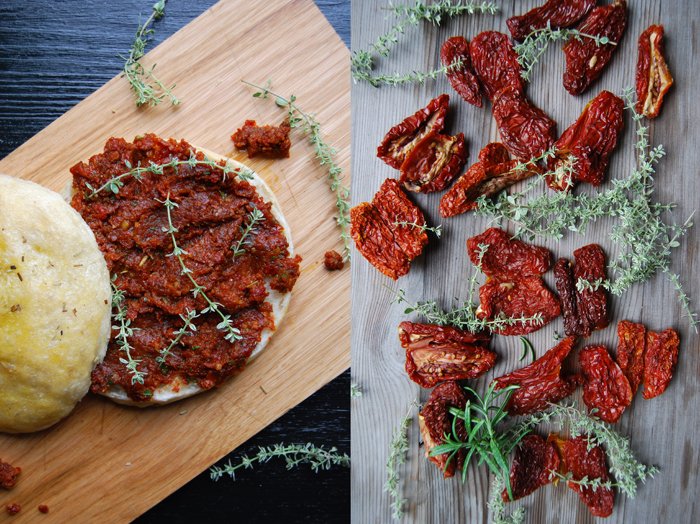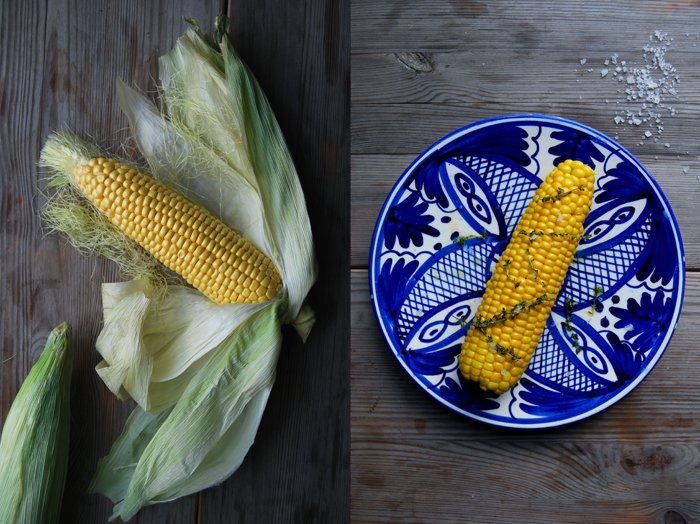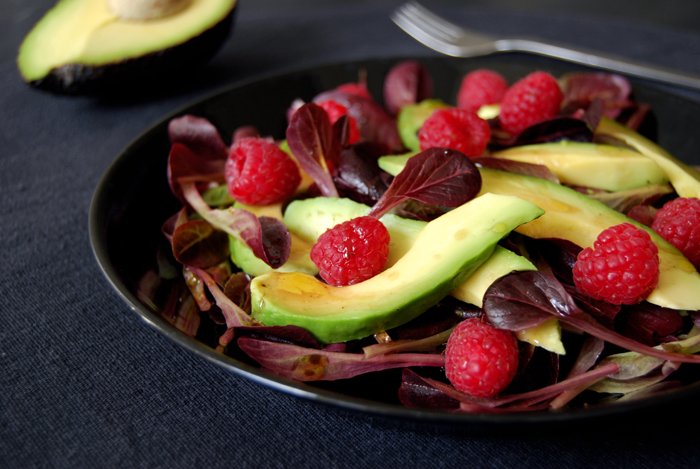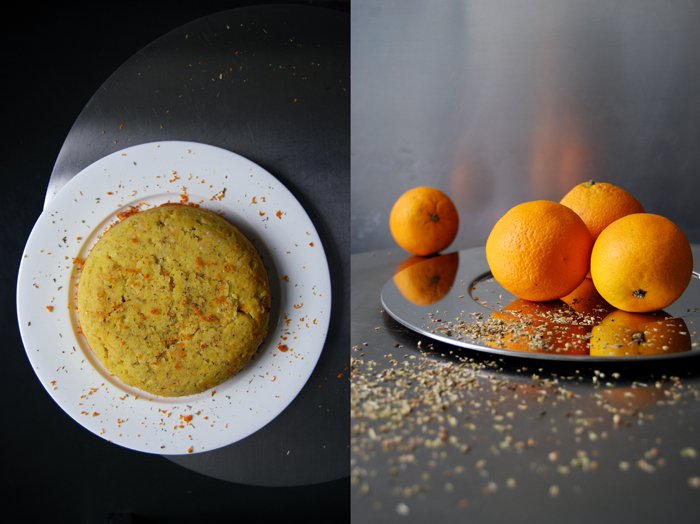Jenny's Kapunata made with Leli's Bell Peppers and Aubergines
Kapunata, Maltese caponata, is another one of Malta's delicious and famous vegetable dishes, a salad made of cooked green bell peppers, aubergine, tomatoes, coarsely chopped onions, capers, olives and garlic. It's eaten warm or cold, with bread, on the beach or for lunch. There are many variations on this refreshing composition, some like to mix in swordfish or tuna and in Sicily, you find recipes which add raisins and pine nuts, or potatoes and carrots.
I asked my Maltese Mama Jenny to cook her kapunata for us as this is her signature dish. Hers is chunky, thick and juicy. You can taste the strong flavours of ripe green bell peppers, grilled aubergine and sweet tomatoes. I love a big spoonful of it, piled on a crusty slice of Maltese bread, it's heavenly! Jenny calls it "the taste of summer"! She prepares it in big batches and keeps it in the fridge for spontaneous lunches, or for one of her delicious beach Ftiras mixed with tuna. Her mother, Granny Edith used to cook it for her and she still does, Jenny actually prefers it when her mother cooks it as "mama's cooking is always better"! Edith just leaves out the aubergine.
I loved to see Jenny cooking her kapunata, she stood at the gas cooker with her Tweety apron on and a big smile on her face, stirring the vegetables once in a while. This picture in my mind made the kapunata taste even better!
Before we could start cooking I went to my vegetable man Leli to buy the fresh ingredients. Twice a week, he parks his van filled with the freshest fruits and vegetables in front of a beautiful pink oleander tree in the middle of Msida. Leli grows his vegetables in his fields in Buskett and Rabat, in the centre of Malta, and for 28 years he's been offering his harvest at this exact corner in Msida. He fills his green boxes with Qarabaghli (zucchini), aubergine, tomatoes, cucumber, various peppers, Maltese figs and peaches, the most aromatic herbs, and so much more. He's my favourite farmer in the world! As soon as he saw us coming around the corner, his face lit up! We don't meet so often, but over the years we developed a special bond with him, and it all happened over vegetables and fruits!
To cook kapunata, it's important to use only ripe vegetables to achieve a fruity and rich taste!
Jenny's Kapunata
For 4 people you need
aubergine, cut into cubes, 1
green bell peppers, roughly cut, 2 large or 3 medium
large tomatoes, chopped, 4
large onion, quartered and sliced thickly, 1
garlic, crushed, 3 cloves
black olives, chopped, 10
capers, a handful
tomato paste 2 tablespoons
salt and pepper
olive oil
optional (to add some spiciness): fresh green chili pepper, finely chopped, 1
In a baking dish, mix the aubergine with a splash of olive oil and put under the grill for a few minutes until golden.
In a large pot, heat a splash of olive oil and sauté the onion and garlic on medium heat for a few minutes until translucent. Add the bell peppers, cook for 2 minutes and add the tomatoes and grilled aubergine. Simmer for about 15 minutes until the vegetables are soft, stirring once in a while and adding a little water if the mixture is too dry. Add the tomato paste, capers and olives, season with salt and pepper to taste and cook for further 5 minutes. Serve hot or cold with sourdough bread.
Fava Beans, Bigilla and the Silent City of Mdina
Here's another speciality of the Maltese Islands, the famous and delicious Bigilla! This frugal country-style dish is made of cooked dried fava beans, garlic, olive oil, dried chili pepper and herbs. I like to mix in fresh oregano, other recipes feature mint, basil or marjoram. Bigilla is a thick dip, often served with fresh bread as an appetizer in restaurants. In the past and occasionally even today, street venders sell this dish in the streets of Valletta and other old villages but it's also very easy to make at home, preferably in big batches!
I first ate Bigilla years ago in a pretty little restaurant in one of the narrow streets of Mdina, Malta's magical old capital. The medieval town's architecture was originally influenced by the Arabic period, from 870 to 1091. After many buildings were destroyed in an earthquake in 1693, they were rebuilt with Baroque elements in their majestic facades. Its history goes back even further, to 4000 BC. Mdina is located on a hilltop in the middle of Malta and it always had strategic importance for the island. Today, less than 300 people live in the old houses and palazzi and no cars are allowed, just the inhabitants have permission to drive through the tiny roads. It's one of the most peaceful and quiet towns I know which explains its nickname, the Silent City. The foundation of the new capital Valletta was laid in 1566, it's much bigger than Mdina and located right above the Grand Harbour, one of the most important harbours of Europe at that time.
When we go to Mdina, we always stop at a little bar, Crystal Palace, which is at the entrance of a town right opposite Mdina, in Rabat. It's famous for its Qassatat and Pastizzi, I mentioned the two delicacies a couple days ago when I wrote about our grilled amberjack from Marsaxlokk. If you ever visit Mdina, you should enter this simple looking bar and enjoy a couple of their buttery snacks!
Bigilla with fresh Oregano
You have to soak the dried fava beans in cold water overnight.
For 6 people you need
dried fava beans 400g / 14 ounces
olive oil 100ml / 3.5 ounces
water 150-250ml / 5-8 1/2 ounces, more depending on the bean's texture
small dried hot chili peppers, chopped, 2
garlic, crushed, 5 big cloves
fresh oregano leaves, chopped, 1 1/2 tablespoons plus more to taste
salt
Cook the soaked beans in lots of water (no salt!) until soft, for around 45-60 minutes.
Mix the beans, olive oil, water, chili peppers, garlic and oregano and purée to a smooth paste in a blender. Season with salt and oregano to taste, add more water if the texture isn't smooth enough.
Enjoy with bread or crackers.
meet in your kitchen | Pan roasted Bread with Sam Cremona's Olive Oil and fresh Oregano
A drive through the countryside, over barren hill tops and streets lined with blossoming pink oleander leads us to a tiny village in the north of Malta, Wardija. We stopped in front of a big, green iron gate in the shade of majestic pine trees, their woody smell caught my senses as soon as I left the car! It was around noon, the sun was at its peak and the air was shimmering. The scene was peaceful and silent when Sam Cremona opened the gate and welcomed us with a big smile on his face. He is a man in his sixties, his skin darkened by the Mediterranean sun, and I had been looking forward to this meeting for months!
Sam produces his own olive oil of extraordinary quality and managed to revive an ancient kind of Maltese olive, the Bidni olive. This species has been cultivated on the island for at least 2000 years but it was on the brink of extinction, just 25 trees were left when Sam started his research. He was looking for olive trees to plant on the 1 hectare of land that surrounds his beautiful country house and the story and quality of this olive caught his attention. It's rich in antioxidants, the concentration is so high that the eggs of the olive fruit fly, one of the biggest pests for olive trees, never hatch in the fruits. The antioxidants also cause the oil's tasty bitterness and its positive effect on the immune system.
When Sam decided to work with the Bidni olive in 2002 he started a program called PRIMO, Project for the Revival of the Indigenous Maltese Olive. He uses cuttings from the few old trees left on the island and grafts them onto other trees. 40 producers joined him, hundreds of trees have been successfully planted and a wonderful olive oil has come back to life. Sam had to set up his own small olive press as there was none on the island at that time. This allows him to pick the fruits and press them on the same day, another reason for the oil's high quality.
Sam invited me to his kitchen to taste two of his olive oils, one made of the Bidni olive and another that's a little less bitter in taste. Both were wonderful, fragrant and rich. I could smell citrus fruits, pine trees, tomatoes and thyme, all embodied in these delicious Wardija Olive Oils! I was so impressed that I bought some of his oil straight away, if you would like to do the same or if you would like some more information about Sam's oil and project, you can contact him at matty@vol.net.mt.
After tasting the oil we enjoyed some with a few slices of Maltese bread, one of the best ways to savor a good olive oil, but I already knew what I would use it for as soon as I got back home. I discovered a very simple, delicious little snack when I was in Sicily. Pan roasted bread, dipped in olive oil and cooked with fresh oregano leaves. When the bread is golden brown and crunchy on the outside, you take it out of the pan and sprinkle a little more oregano, black pepper and coarse sea salt on top. As always, when a recipe is so simple, choose the best quality bread, olive oil and sea salt you can get and pick fresh oregano leaves if possible. It's divine!
Pan Roasted Bread with Olive Oil and fresh Oregano
For 4 people, you need a small loaf of sourdough bread, thickly sliced, olive oil and coarse sea salt to taste, crushed black peppercorns and a handful of fresh oregano. Brush the slices of bread with olive oil on both sides and sprinkle with the herb, leave a few leaves to put on the bread when it's done. Heat a heavy pan and cook the bread for a few minutes until golden brown on each side, sprinkle it with some salt, pepper and fresh oregano.
A thick Basil Pesto with Spaghetti and Tomatoes
This pesto is as concentrated as basil pesto can be! I had two big bouquets of this aromatic herb on the table filling the air in the kitchen with the most beautiful smell - fresh, sweet and green! After half an hour of picking the leaves off the stems, I got rewarded with a big pile ready to be turned into a pesto! The weight was about 150g (5.5 ounces), a Mediterranean luxury I can only dream of in the city. I think I would have to buy 20 pots of basil at home to gather this amount!
Here in Malta I can create a luscious pesto which is richer than any pesto I've ever eaten before. It's more of a spread than an oily sauce! The recipe is a classic, I mix the herb with pine nuts, parmesan, garlic, olive oil and a bit of salt, but the amount of basil leaves and their intense taste make the difference. Herbs that grow in pots don't develop such a strong aroma, the right soil and hours of sunshine, that's what you taste in the end.
I often chop some fresh tomatoes into this dish, I like the freshness they add. Sometimes I mix in a few sautéed slices of zucchini but the red fruit is still my favourite!
Spaghetti with Basil Pesto and Tomatoes
For 4-6 people you need
spaghetti or linguine 400-600g / 14-21 ounces
tomatoes, chopped, 4-6
basil leaves 150g / 5.5 ounces
olive oil 150ml / 5 ounces plus more if you prefer the pesto more liquid
pine nuts 30g / 1 ounce
Parmesan 40g / 1.5 ounces plus more for topping
garlic 2 big cloves
salt
black peppercorns, crushed in a mortar
Cook the pasta in lots of salted water, al dente.
Mix the basil, pine nuts, garlic, parmesan and olive oil in a blender and season with salt to taste.
Divide the hot pasta between the plates and add a dollop of pesto on top. Sprinkle with the tomatoes, parmesan and crushed pepper, serve immediately.
Melon, Mint and Lemon
One of the great things about living in the Mediterranean in summer is that you can find fresh fruits, herbs and vegetables at every street corner. Farmers offer their harvest of the morning on little open vans, ripe tomatoes, zucchini, aubergines, the sweetest peaches, melons, grapes and the biggest bunches of basil I've ever seen in my life. They are so big that you have to hold them with both of your hands! These mobile shops are the social meeting points of each street or village. It's a beautiful scene of women buying their groceries for the next days, checking the quality of the offers, exchanging gossip and enjoying the fresh air before the heat takes over again.
My trusted vegetable man, Leli, comes to Msida twice a week, a humble man with beautiful eyes as blue as the Mediterranean sea! Unfortunately, I haven't managed to meet him yet. He comes to our village on Tuesday and Friday in the morning and I was busy driving around on the island on both days. Jenny told me that his face lit up with a big smile when she told him that we were soon to arrive! I asked her to buy some vegetables for me before I arrived and she bought me one of the sweetest melons that I have ever eaten. It was like honey, so juicy and ripe!
We enjoyed a couple slices before I threw a handful of mint leaves from Jenny's garden on top. Then I drizzled some fresh lemon juice over the yellow fruit, a tip a got from my Maltese auntie Sandra. It's perfectly refreshing on these days that push to almost 40°C (104°F) on the thermometer! All you need is a very ripe Galia melon - Bettiegh in Maltese - skinned and cut into slices, a handful of fresh mint leaves, the juice of half a lemon and the heat can come!
Golden Zucchini and Crisp Sage
The south of Malta is a different world. I've heard this so often and for someone coming from abroad, like me, this can sound a bit strange considering the island's tiny size of just about 28km (17 miles) in length. After spending so many summers here, I can see and understand the islands' different mentalities a little bit more but I'm still learning! No matter how big or small a country is, people cultivate their unique habits, traditions, dialects and recipes. In the south of Malta, where you hear more Maltese than English (the country's second language), you see more small farms with horses, sheep and goats in the countryside and one of the most significant characteristics of this part of the island is its fascination for fireworks. The famous fireworks for the Festas, the holy feast for each village's saint, have definitely reached another dimension in some of the southern villages. They go on for hours and are passionately planned to perfection by a bunch of pyrotechnics enthusiasts a year ahead - they have proudly made it into the Guiness Book of World Records!
One of the villages that is popular for its spectacular firework orchestration is Mqabba, Emma's (my Maltese sister) boyfriend's hometown. We went there a couple days ago to visit Mariano's farm where he keeps horses, sheep, chickens and the cutest goat babies that were only four days old. Farming isn't his profession, it's a family hobby passed on from one generation to the next. I was jealous when I saw all the vegetables they grow, the cheese they make, it's a perfect little farm to deliver fresh eggs and vegetables to the table, every day!
When we got home, I felt inspired to cook one of Malta's most delicious vegetables, qarabaghli. I cut the round zucchinis into thick steaks and sautéed them for a few minutes until they were golden and started to soften on the outside. We ate them with crisp, fried sage leaves, it's such a great combination! You just have to watch them carefully while they are in the pan as the leaves taste bitter when they become too dark! You can eat this dish warm or cold as an antipasto.
Golden Zucchini and Crisp Sage
For 2 people you need
medium zucchini (round or long), cut into thick steaks, 1
big sage leaves, a handful
olive oil
salt and pepper
In a large pan, heat a splash of olive oil and sauté the zucchini on a high-medium temperature until golden on both sides. They have to be spread out in the pan, you may have to cook them in batches. Add the sage leaves for the last 1-2 minutes until they are crisp. Season the zucchini with salt and pepper on both sides and serve warm or cold.
A Maltese Beach Ftira with Tomato, Capers, Olives and Mint
Today I will share a sandwich with you that is as simple as it is perfect, Ftira mimlija - or filled, round Ftira bread. This sandwich doesn't require many ingredients but the few you use must be of exceptional quality. All you need is an extraordinarily delicious loaf of white sourdough bread, finest quality extra virgin olive oil, ripe tomatoes, red onions, olives, capers and fresh mint and basil leaves. This is a Maltese classic which you can buy at every beach kiosk and bar in many variations, some of them are also made with tuna, anchovies, bell pepper, Gbejna (Maltese goat cheese) or coarse sausage. I prefer to keep it simple, that's how my friend Essa makes them and that's the recipe I will share with you, it's my favourite! Every Maltese family has their own traditional recipe for this popular snack, so there isn't only one way to prepare it.
Depending on the time I have for my sandwich preparations I choose between the stuffed Ftira or a quick beach version without a filling, the equally famous Hobz biz-Zejt u Tadam (bread with oil and tomatoes). When I only have a few minutes left before our friends ring at the door to pick us up to go to the beach, this is my choice! I cut the bread in half, dip it in a plate of olive oil, rub it with a cut, ripe tomato and sprinkle it with coarse sea salt and crushed pepper. When you close the bread and push it together, it will soak the fruity and oily juices until you take it out of your bag after a long swim in the sea. Delicious! Jenny (my Maltese Mama) prepares these for us sometimes and I'm always happy when she pulls this snack out of her cooling box!
I think it's time for a quick introduction for those of you who don't really have an idea of where I am at the moment. The islands of Malta lie 80 km (50 miles) south of Sicily in the Mediterranean sea. This tiny country is formed by the islands of Malta, Gozo and Comino and a few smaller uninhabited rocks, it's one of the smallest and most densely populated countries in the world. Its beautiful baroque capital is called Valletta which is a UNESCO World Heritage city. While we're here, we live on the island Malta which is the largest of them all but still very small - only 28 x 13km / 17 x 8 miles!
Maltese Ftira Sandwich with Tomato, Capers, Olives and Mint
For 2 Ftiras Sandwiches you need
Ftira, 2 quarters or 2 sourdough buns
big tomatoes, chopped, 2
capers, rinsed and dried, 1-2 teaspoons
small red onion, chopped, 1-2 teaspoons
black olives, chopped, 6
big basil leaves 6
small mint leaves 6
olive oil 4-8 tablespoons
salt and pepper
Sprinkle each slice of the Ftira or bun with 1-2 tablespoons of olive oil and put the tomatoes, capers, onion, olives and herbs on top. Season with salt and pepper to taste and close the sandwich, enjoy!
Bread Salad with Tomato and Basil and an early morning swim
The most beautiful sparkling blue and a fantastic snorkeling trip was our reward for leaving the house quite early on Sunday morning while everyone else was still asleep in the village. I'm awake earliest (together with Jenny) so it was my job to get the other ones out of their beds and into the car. I managed and off we went to Wied iz-Zurrieq for an early Sunday morning swim before we went to the fish market in Marsaxlokk.
Imagine a fjord cut deep into barren rocks, steep cliffs tumbling into the calm, crystal blue sea in the protected bay. The water is so clear that you can see the seabed metres below and swarms of colourful fish swimming around your feet. The blue of the sea is just mesmerizing, I love to go there in the morning, when the sun is low and creates sparkling reflections which reach deep into the water. I'm obsessed with snorkeling and this is one of my favorite spots.
Most of the tourists come here to visit the famous Blue Grotto, fishermen in tiny colourful wooden boats - Luzzus in Maltese - take them around the corner of the fjord to show them the grotto's fascinating shades of blue. I'm here to see the big schools of fish along the cliffs and to swim through the bubbles of the divers who are getting ready for their trip from this spot. If you visit this place you should either come very early in the morning to enjoy the water and sea world or in the early evening when fishermen's families come to take an evening swim at the end of the fjord. There's lots of chatting and laughing, kids jumping into the sea and older boys looking for octopus. This scene is as beautiful as it is timeless, the atmosphere is basically the same as it was 100 years ago. This is Malta as it's always been and how it will hopefully stay!
At home in Jenny's kitchen, I'm back in my cooking groove and one of the dishes that I prepared for us was my personal ultimate holiday salad, Panzanella, a bread salad with tomatoes, red onions, basil and mint. It's perfect for a quick lunch when the temperatures are so high that you don't even want to switch on the cooker. When I was a child, we used to go to a village close to Luca in Tuscany for our summer holidays. One of the dishes my mother prepared very often (and I loved) was this salad. In the South, bread tends to dry out much quicker because of the high temperatures, there is always some stale bread lying on the table waiting for further processing. So this recipe comes in handy quite often when we're here in Malta.
Bread Salad with Tomato, Basil and Onions
For 2 people you need
medium tomatoes, thickly sliced, 3
small red onion, chopped, 1
white bread, cut into big cubes, 1 thick slice
fresh basil leaves, a handful
olive oil 3 tablespoons
balsamic vinegar 2 tablespoons
salt and pepper
Arrange the tomatoes in a big plate and sprinkle with the onions, bread and basil leaves. Whisk the olive oil and vinegar, season with salt and pepper to taste and pour over the salad, serve immediately.
Cantaloupe Melon in Pastis
I have a weak spot for pastis, chilled with two ice cubes and a shot of water and I also use it to refine my recipes. I mentioned yesterday that I love this liqueur, it's my favourite drink in bars and bistros. In summer it feels refreshing and in winter time I get a cosy feeling from the strong anise aroma. It's my drink, for years now!
A while ago I travelled along the Côte d'Azur in my car. One afternoon I was seduced by the sight of a lonely bay and decided to stop for a quick swim. I left all my luggage in the car (I was young and unexperienced in traveling) and went for a late afternoon swim. When I got back, the car was gone and I was left with the clothes on my body, a towel and my wallet. I was in a mess, it was the first time something was stolen from me so I did what lots of daughter's do in a situation like this and called my mother.
Crying and sobbing, I tried to explain the situation on the phone. I wasn't in a state for a proper conversation, I felt ashamed. My mother, who is quite a pragmatic character, told me to calm down, get everything organised at the police station and then head to the next decent looking bar and have a pastis. I obeyed, the drink worked and I chilled out! In the end, I even got my car back but the luggage was gone (mine, my boyfriend's bags were still there!). I found out that the thieves tend to take the cars to a quiet place to empty them, lesson learnt! I never left my luggage unattended in a car again but I also understood that any material loss is frustrating but not a tragedy!
Over the years I found out that my beloved pastis has lots of potential in the kitchen, sweet and savory. Here's a fruity recipe which is a great summery alternative to an aperitif, sweet little balls of Cantaloupe melon in pastis! All you need is a ripe melon, either cut into cubes or scooped out with a melon baller (I found out about this strange name just a few days ago). You mix the fruit with pastis and water and pick them out of a whiskey glass with cocktail picks (or toothpicks).
Cantaloupe Melon in Pastis
This is a rough guideline which you can easily adapt to your taste.
For 4-6 people you need
a ripe Cantaloupe melon
pastis, chilled, to taste
For 12 balls of melon mix 1 1/2 shots of pastis with 1 1/2 shots of water and pour over the fruit. Put 6 fruity balls in a whiskey glass and fill just the bottom with the pastis/ water mixture. Serve with cocktail picks or wooden toothpicks.
You can either make it fresh and serve immediately or let the fruit soak for a few hours (which will increase their alcoholic impact), in which case you should keep it in the fridge.
This recipe focuses on the fruit rather than on the drink. You could also make a cocktail by adding just 2-3 balls of melon to a glass of 2cl of pastis filled with water and 1-2 ice cubes.
Green Beans, Fresh Herbs and a Fried Egg
Three different kinds of fresh herbs are spread on my table, ready to be mixed with my sautéed green beans! I chose a few sprigs of fresh thyme, summer savory and marjoram from my herbal pot selection to turn this simple dish into an aromatic combination of crisp greens and fried eggs. I deglazed the beans with pastis to add one more flavour, a wonderfully warm anise! The strong aroma of this liqueur lifts the beans up to another level, it works with fava beans as well!
Unfortunately, many people around me are not too fond of anise aroma, it's one of those spices that is mentioned the most when I ask people about their culinary dislikes. Therefore I keep this dish for the two of us and the few who appreciate pastis as much as I do, be it on a plate or in a glass.Tomorrow I will share a recipe with you which shows off this liqueur's sweet side!
Green Beans, Fresh Herbs and a Fried Egg
For 2 people you need
green beans, the ends cut off, 250g / 9 ounces
small onion, cut in half and sliced thinly, 1
pastis 50ml / 1 3/4 ounces
water 50ml / 1 3/4 ounces
garlic, thinly sliced, 2 cloves
thyme a small bunch
summer savory 2 sprigs
marjoram 2 sprigs
olive oil
salt and pepper
organic eggs 2
butter
In large sauce pan, heat a splash of olive oil and cook the onions on medium temperature for 2 minutes. Add a little more oil and the beans, stir and cook for 3 minutes. Deglaze with the pastis, season with salt and pepper, add the water and herbs and cook with a closed lid for 8-10 minutes or until the beans are al dente. Season with salt, pepper and pastis to taste.
Heat a little butter in a pan and fry the eggs on a medium heat. Serve the eggs on top of the beans.
Red Currants with Cardamom Yoghurt
This is one of my summer highlights: five ingredients create this quick little feast, you’ll only need red currants, yoghurt, heavy cream, cardamom and a little sugar. As soon as I spot the little red berries at the farmers’ market nothing can stop me from buying them weekly. Their firm skin holds all the juices together that spread with the first bite and you never know if it will be more on the sweet or on the sour side, depending on each berry's ripeness. I like to mix them with a very creamy yoghurt, seasoned with cardamom and just a little sugar. The smooth milkiness balances out the tart fruit without distracting from its qualities. Instead of just using a rich yoghurt (high in tasty fat), I like to mix it with with sweetened heavy cream whipped with ground cardamom. It creates a thick and fluffy texture - and it tastes divine!
When I prepared my fruits and cream, a friend from Canada popped in my kitchen spontaneously. As soon as she saw the glowing red of the berries her attention moved away from me and towards the fruit. Feasts are there to share, so I handed her a bowl of my creamy yoghurt topped with red currants - she looked happy like a child in a candy store!
Red Currants with Cardamom Yoghurt
For 2-4 people you need
heavy cream 200g / 3/4 cups plus 1 tablespoon
granulated sugar 2 tablespoons, plus more to taste
ground cardamom 1/4 teaspoon, plus more to taste
yoghurt 450g / 1 pound
red currants 450g / 1 pound
Whip the heavy cream, sugar and cardamom until thick and creamy. Gently fold into the yoghurt and season to taste with cardamom and sugar.
Serve the berries on top of the yoghurt.
Mediterranean Feta and Vegetable Casserole
It was a cold, grey evening when my aunt Ursula invited us to dinner a few years ago. We meet quite often to enjoy good food and wine together but that day we felt tired from work and weren't in the mood for a heavy meal. When we arrived at her apartment we saw that she hadn't set up the table in the dining room as she normally does but created a comfy dining scene in her living room. The low table was packed with loaves of bread with herbs and dried tomatoes, a few dips and a bottle of red wine was just waiting for us. Our mood was lifted straight away, this was exactly what we needed, a relaxed evening on the sofa! When Ursula came out of the kitchen with a steaming dish in her hands, filling the air with the smell of roast vegetables and herbs she had our attention and we felt awake again!
The meal she served became one of my most beloved dishes, Mediterranean vegetables on top of a thick slice of feta roasted in the oven for only half an hour. By the end of it you have a plate full of juicy, partly crunchy vegetables that you can spoon onto a thick slice of bread together with the aromatic cheese and herbs, it's delicious! The mix of zucchini, red and yellow bell pepper, aubergine, red onions, garlic and lots of thyme and rosemary became my favourite, personal variation on this recipe. Just throw together a composition that suits your taste and put this on a slice of a French country bread, ciabatta or focaccia and I'm sure you'll be as happy as I am whenever I cook this meal!
I love to make this when friends come over, I just put one or two big casseroles on our long table, a few loaves of bread, some wine - this is the perfect food and atmosphere to let the laughing and chatting begin! Or to celebrate that Germany won the World Cup!
Mediterranean Vegetable and Feta Casserole
For 4 people you need
feta cheese, 2 slices, around 2cm / 3/4" thick, 400g / 14 ounces
medium aubergine, cut into 1cm / 1/2" cubes, 1
medium zucchini, cut in half and sliced, 1
yellow bell pepper, cut into cubes, 1
red bell pepper, cut into cubes, 1
medium tomatoes, cut into cubes, 3
medium red onions, cut into 8 pieces, 2
garlic, 8 cloves in their skin
olive oil 60ml / 2 ounces
thyme, a small bunch
rosemary, 6 sprigs
salt and pepper
Set the oven to 200°C / 390°F (I use the Rotitherm roasting setting).
Put the feta cheese next to each other in a baking dish, cover with the vegetables, garlic and herbs and season with salt and pepper. Pour the olive oil on top and mix until everything is coated in oil (add a little bit more if it's not enough). Bake in the oven for 25-30 minutes or until the vegetables are soft, they shouldn't burn. Check the aubergine first as it needs the longest to cook. Season with salt and pepper to taste and serve with rustic white bread.
Apricot Clafoutis
My Apricot Clafoutis is as easy to make as pancakes - and it's at least as addictive! It looks like a tart but the texture is more like a flan, it's not too sweet, light and fruity. I can imagine it as a wonderful dessert for a summer dinner, sitting outside in a garden and finishing the meal with a pretty French clafoutis.
We had a friend over and as soon as the clafoutis was out of the oven, we gathered in my kitchen and waited impatiently for it to cool down a bit. We cut this scrumptious little thing into pieces and it was nearly gone in 15 minutes! It's one of those sweet treats that you end up eating in one go without noticing. Our guest had never tried this French dish before and he looked quite taken by its taste - he was the first one who asked for a second piece!
Traditionally, a clafoutis is made with black unpitted cherries but I needed a cherry break as I ate far too many of them in the past few days. Apricots were my first choice, and I almost prefer them in this dish. I like how they blend in with the vanilla flavoured batter. They aren't as sweet as peaches or cherries which fits very well in this composition. I also left out the traditional icing sugar on top, all the flavours were so well balanced that I didn't feel the need to add more sweetness.
Apricot Clafoutis
For a 23cm /9" heavy pan or baking dish you need
apricots, cut in half, 6
plain flour 80g / 3 ounces
granulated sugar 4 tablespoons
a pinch of fresh vanilla
a pinch of salt
butter, melted, 30g / 1 ounce
organic eggs 4
milk 200ml/ 7 ounces
brandy 3 tablespoons
optionally: icing sugar for dusting
Set the oven to 190°C / 375°F (fan-assisted oven) and butter the pan generously.
Combine the dry ingredients. Whisk the milk, eggs, brandy and melted butter and pour into the dry mixture, mixing constantly until well combined.
Spread the apricots in the pan and pour the batter on top. Bake for 20 minutes, turn the oven down to 175°C / 350°F and bake for another 8 minutes or until the clafoutis is golden and set. Let it cool for 5 minutes, leave it in the pan or turn it around and sprinkle with icing sugar if you like, serve warm.
Orecchiette with Roasted Cherry Tomatoes, Buffalo Mozzarella and Basil
This meal started off with an image in my head. Quite often I imagine recipes visually, I can see the colours, the texture, the whole composition is just waiting to get out of my head onto a plate. For days I've been mentally carrying a Tuscan picture with me (it's Tuscan to me at least). I had a big bowl of orecchiette in mind, topped with roasted cherry tomatoes on a branch. I could see the woody sprig turning black and the firm skin of the red fruit grilled and burst creating a smoky sweetness to mix with my pasta. Sprinkled with pieces of Buffalo mozzarella and fresh basil it turns into a tasty beauty in green, white and red - the Italian flag on a plate!
This is another one of these simple and perfect Italian dishes, the classic combination of tomato, mozzarella and fresh herbs which I love so much in various recipes. It is as good as an insalata caprese which I mix with mint as it is in a Panzanella, a Tuscan salad made with stale bread, a recipe which is on the top of my cooking list for when I'm in Malta (which will be very soon!). You can throw it on pizza, quiche or mix it with any kinds of pasta, warm or cold, with rosemary, oregano, thyme or whatever your herb garden offers. This is the essence of pure Italian comfort food!
Orecchiette with Roasted Cherry Tomatoes, Mozzarella and Basil
For 2 people you need
orecchiette 200g / 7 ounces
cherry tomatoes on a branch 500g / 1 pound
Buffalo mozzarella, torn into bite sized pieces, 125g / 4.5 ounces
big basil leaves, torn, 10
olive oil 50ml / 1 3/4 ounces
garlic, cut in half, 1 clove
salt and crushed black pepper
Cook the pasta in lots of salted water al dente.
Turn on the grill of your oven, put the tomatoes (on their branches) on a baking dish and roast for 12 minutes or until their skin starts to turn black and burst.
In a saucepan, warm up the olive oil together with the garlic and leave on a medium-low heat for 1-2 minutes.
Divide the pasta between 2 big plates, mix with the garlic olive oil and top with mozzarella, basil and a roasted branch of tomatoes. Sprinkle with salt and crushed pepper.
Sun-dried Tomato Pesto with Rosemary and Thyme
7:1! That was a crazy night and I still can't believe that Germany beat Brazil in the semi final with such an unbelievable result. After the 3rd goal I thought I was dreaming, and it went on, and on and on! Although I'm not the biggest football fan even I couldn't keep my eyes off the game!
Time to calm down now, and nothing relaxes me more than a nice portion of carbohydrates! Luckily it's Sandwich Wednesday again and after last weeks fruity and sweet roast apricots on Malin's delicious turmeric bread I felt like something hearty again, a concentrated sun-dried tomato pesto with rosemary and thyme spread on an oily focaccia bun. I love this rich pesto just as much mixed with spaghetti, therefore I always prepare a big bowl to last for a few days and include at least one pasta meal. It's great on pizza too and I'm sure there are a few other combinations you can come up with!
I always buy Maltese, Gozitan or Italian dried tomatoes. The ripe fruits taste so intense when they dry up under the Mediterranean sun, a bit oily and salty through the sea salt that helps the drying process. Before I throw them in the food processor I cook them in a bit of water for just a minute to soften them and rinse off excess salt. I purée them together with some pine nuts, garlic, fresh rosemary and thyme, olive oil and a bit of the salty liquid used to cook the tomatoes. Sometimes I add some fresh chili or cumin, basil is nice too! It's one of these recipes you can easily adapt to your mood and taste!
Sun-dried Tomato Pesto with Rosemary and Thyme
For 4 people you need
sun-dried tomatoes, cooked in some water for 1 minute, 70g / 2.5 ounces
water used to cook the tomatoes, 2 tablespoons (if you use the pesto for a pasta dish add 6-8 tablespoons)
olive oil 50ml /2 ounces
pine nuts 20g / 1 ounces
garlic, 1 big clove
fresh thyme leaves 1 1/2 tablespoon plus more for topping
fresh rosemary, 1 tablespoon
optionally: chopped fresh chili, a pinch of cumin or fresh basil
For sandwiches
4 focaccia buns or 1 loaf of bread
For a pasta dish
spaghetti 400g / 14 ounes
Purée the ingredients in a food processor to a smooth paste and spread on the bread or mix with spaghetti cooked in lots of salted water (al dente).
Golden Corn on the Cob with Lemon Thyme Butter and Sea Salt
Golden corn on the cob is one of my culinary highlights in July! The temperatures rise (normally, not this summer), the wheat starts to turn the countryside to gold and the corn is high. We used to play in the corn fields when we were young - although we weren't allowed, it's the perfect place for hide and seek, especially if you're only half the size of a corn plant.
I like to cook sweetcorn in sugared water until the kernels are tender but still crunchy, just soft enough to bite them off. I glaze the bright yellow with melted lemon thyme butter and sprinkle it with sea salt. That's all it needs, this meal is about purism! Sometimes I cook a few more and cut off the corn, they stay fresh in the fridge for a couple days and are nice in salads or on pizza.
Every time I hold a hot, buttery cob in my fingers and I taste their pure sweetness I feel like a child again - this is fun food!
Corn on the Cob with Lemon Thyme Butter and Sea Salt
For 2 people you need
corn on the cob, husks and silk removed, 3sugar 1 tablespoon
butter 30g / 1 ounce
lemon thyme 18 small sprigs (if your thyme is a bit woody, just use the leaves)
coarse sea salt
In a large pot, bring lots of water to the boil, add the sugar and sweetcorn and cook on a medium-low heat for 10-20 minutes until the corn is tender and you can loosen a kernel with a fork.
Melt the butter in a sauce pan, add the thyme and cook on a medium heat for about 2 minutes. The leaves shouldn't get dark, just soften a bit.
Coat the sweetcorn with the melted butter and sprinkle with the sea salt and thyme. Enjoy!
Mâche, Avocado and Raspberry Salad with Honey
This week I can't get enough berries! When I see all those boxes filled with tiny colourful berries at the market I don't even know where to start. Raspberries, gooseberries, red currants, strawberries, so much to choose from! Unfortunately, they haven't reached their peak in sweetness yet due to our disastrous summer weather, but I enjoy them nonetheless. I can't wait any longer, we only have them for a few months and I don't want to miss out.
As much as I love to throw these fruits on tarts or enjoy them as a fruity nibbling alternative to chocolate, they are just as good in fresh and crunchy salads. Combined with the slices of a ripe and velvety avocado, they bring some freshness into the mix. Some mâche salad (also known as field salad or lamb's lettuce) mixed in adds some crunchy bite, perfect for those hot days which I'm still hoping for optimistically. I'll be in Malta soon, there I will definitely get my boiling hot summer weather but I won't find my delicate raspberries. Sometimes you can't have everything in life!
For the 2 of us, I spread a handful of lettuce on 2 plates and covered each of them with the slices of a quarter of a soft avocado and 8 raspberries. I wanted to keep the dressing sweet and fruity, you can use either Balsamico vinegar or raspberry vinegar (or mix the two of them). Whisk 3 tablespoons of olive oil with 2 tablespoons of vinegar, add 1/2 a teaspoon of honey and season with salt and pepper. Sprinkle over your salad sparingly.
Roasted Apricots on Turmeric Bread
Sandwich Wednesday news! After 7 months of baking my own bread or visiting one of my trusted bakeries, there will be a new monthly sandwich feature on the blog, eat in my kitchen x The Bread Exchange.
The Bread Exchange is a trading project started by Malin Elmlid in 2008, she is a master when it comes to baking the perfect sourdough bread. Together we will share our creations on eat in my kitchen, every month she will deliver a loaf of bread to my kitchen and I will turn it into a new sandwich idea. This will be exciting as Malin likes to use the exotic ingredients she gets through trading; turmeric from Iran, vanilla from Madagascar, salt from Israel, charcoal, matcha, the list is long and inspiring!
You can't buy Malin's bread, you can only trade for it and that makes it all the more special. You can offer culinary products, a dinner, invite her to a special place, teach her one of your skills or share a talent. Anything of personal value might inspire her and become your trade. The Bread Exchange has been going on all over the world, wherever Malin goes, her sourdough travels with her. More than 1400 loaves of bread have been traded and thankfully enjoyed in Berlin (where she lives), in Sweden (where she's from), the Netherlands, Afghanistan, Sinai, Morocco, Greece, USA and Belgium.
Last winter Malin asked me if I would like to test cook a couple of the recipes for her first cookbook which will be published this autumn. I cooked, baked and savored, they were all delicious and worked out perfectly - it will be so exciting to have the final The Bread Exchange book in my hands!
Now it's time to talk about sandwiches! Malin suggested starting off with her Moonraker Sourdough, a turmeric and honey bread which she created a couple years ago. It's originally made with dried apricots but she left them out this time. This glowing yellow loaf of bread with a strong spice aroma is inspired by the colour palette of the famous 70's Bond movie which gave it its name. Look at the colour and texture of this beautiful bread, imagine turmeric and the best sourdough bread you've ever eaten and you will have an idea of what I had on my kitchen table! As most of you won't be able to find a turmeric bread I will involve the flavours that Malin uses in her bread creations for my sandwiches, so you just have to get (or bake) the best sourdough bread you can find in town and then you can start!
Here's our first eat in my kitchen x The Bread Exchange sandwich creation, fresh apricots roasted with thyme, cardamom and turmeric in honey olive oil together with maple syrup and cardamom crème fraîche on thick slices of turmeric sourdough bread! This sandwich is wonderfully aromatic, juicy and fruity, the spices are present but not overpowering. If you don't have a loaf of bread at hand you could also pack the roast fruits on vanilla ice, this is just as good!
My next sandwich cooperation with Malin will be in August, I don't know what she'll bring to my kitchen but I can't wait to enjoy another one of her creations!
Roast Cardamom Apricots on Turmeric Bread
For 4 open sandwiches you need
sourdough bread, 1 loaf, cut into thick slices
fresh apricots, cut in half, 6
honey 1 tablespoon
olive oil 1 tablespoon
ground turmeric 1/4 teaspoon
ground cardamom 1/4 teaspoon
thyme 10 small sprigs
coarse sea salt
For the spread
crème fraîche or cream cheese 150g / 5.5 ounces
maple syrup 1 teaspoon
a pinch of ground cardamom
a pinch of salt
Set the oven to 230°C / 450°F.
Warm up the honey in a sauce pan and whisk in the olive oil, turmeric and cardamom. Coat the apricots with the honey olive oil, sprinkle with sea salt and spread on a baking dish (cut side up). Lay the thyme on top and roast in the oven for 8 minutes, turn the fruits around and bake for another 2 minutes.
Whisk the ingredients for the spread till creamy, season to taste and spread on the slices of bread. Put 3 apricot halves on each slice, gently as they are soft. Sprinkle with a couple roast thyme sprigs.
Spaghetti with Zucchini, Tomatoes, Olives and Basil
The beginning of July is the perfect time to throw a few of my favourite vegetables on a big plate of spaghetti. This dish is basically a Mediterranean Caponata, just without aubergine as it would have stretched the cooking time and changed the texture - I didn't want a juicy sauce, I was after some crunchiness! I mixed lots of zucchini with my Gozitan capers, anchovies and garlic and sautéed everything for a very short time. This way, the vegetables stay firm and fresh like a salad.
My tomatoes, olives and basil weren't even cooked, I just mixed them together with some olive oil into the warm pasta. When vegetables reach the peak of their season they don't need long to spread their aroma. Spoiled by the sun, strong in flavour and full of vitamins, they have this intense taste of summer that I've been waiting for for months. A few minutes in the hot pan and they were done, that's one of summer's kitchen qualities!
Spaghetti with Zucchini, Tomatoes, Olives and Basil
For 3-4 people you need
spaghetti 300-400g / 10.5-14 ounces
zucchini, cut in half and sliced, 350g / 12.5 ounces
anchovies, rinsed, dried and finely chopped, 1 1/2
garlic, thinly sliced, 3 cloves
capers 2 heaped tablespoons
tomatoes, cut into cubes, 350g / 12.5 ounces
black olives (whole or chopped) 8
fresh basil leaves 10
optionally: fresh mint, chopped, 5 leaves
black pepper
olive oil
Cook the pasta in lots of salted water al dente.
In a large heavy pan, heat a splash of olive oil, add the anchovies, garlic and capers and cook for 1 minute on a medium heat. Add the zucchini and a little more oil and cook for 5 minutes on high-medium temperature, stirring every now and then. Season with pepper (no salt!) and mix into the spaghetti, add a tiny bit of olive oil if the pasta is too dry. Stir in the tomatoes, olives, basil and mint and serve immediately. There should be enough saltiness from the anchovies and capers, I didn't need to add anymore.
Gattò di Patate, Potato Cake with Orange and Oregano
I ate my first gattò di patate a couple years ago in Sicily, a rich potato pie flavoured with Parmesan and herbs. It's a simple dish, as comforting as a nice bowl of pasta savored on the sofa. I liked it so much that I had to try it in my kitchen when I was back home. Some fill it with minced meat or Mozzarella but mine is a celebration of my favourite Sicilian ingredients, orange and oregano. I first encountered this aromatic combination together with a little olive oil and sea salt, as a refreshing breakfast salad during a holiday on a picturesque farm in Noto. This duo is so good that I've used it in quite a few dishes since then, always with satisfying results!
This pie is another example of the French influence on Sicilian cooking, the name for the Italian dish gattò di patate comes from the French gateau (meaning cake). When I shared my Sfincione recipe with you a couple weeks ago I mentioned that there was a big French movement in Sicilian kitchens in the beginning of the 18th century, very often evident by the generous use of eggs and butter. Today's pie follows this rule as well, eggs, butter, flour, parmesan and spices turn simple mashed potatoes into a savory cake. You can eat it as a primo piatto, thinly sliced as it's so rich, or as a main on a cosy night.
Gattò di Patate, Potato Cake with Orange and Oregano
For 4-6 people you need
potatoes, peeled, cooked and drained, warm, 600g / 21 ounces
butter 70g / 2.5 ounces
Parmesan, grated, 120g / 4 ounces
organic eggs, 2 large or 3 small eggs
a pinch of nutmeg, freshly grated
salt 1 teaspoon
pepper
dried oregano 1 teaspoon plus 1 teaspoon or more for topping
zest of 1 small orange for topping
Set the oven to 180°C / 355°F and butter a 20cm / 8" baking dish or springform pan.
Press the warm potatoes through a ricer and mix with the butter, cheese, eggs and spices. Put in the baking dish, even it out and bake for 45 minutes until the pie is cooked through and the centre is set. Let the pie cool for 5-10 minutes before you turn it around (or take it out of the springform pan). Sprinkle with oregano and orange zest and serve warm.


